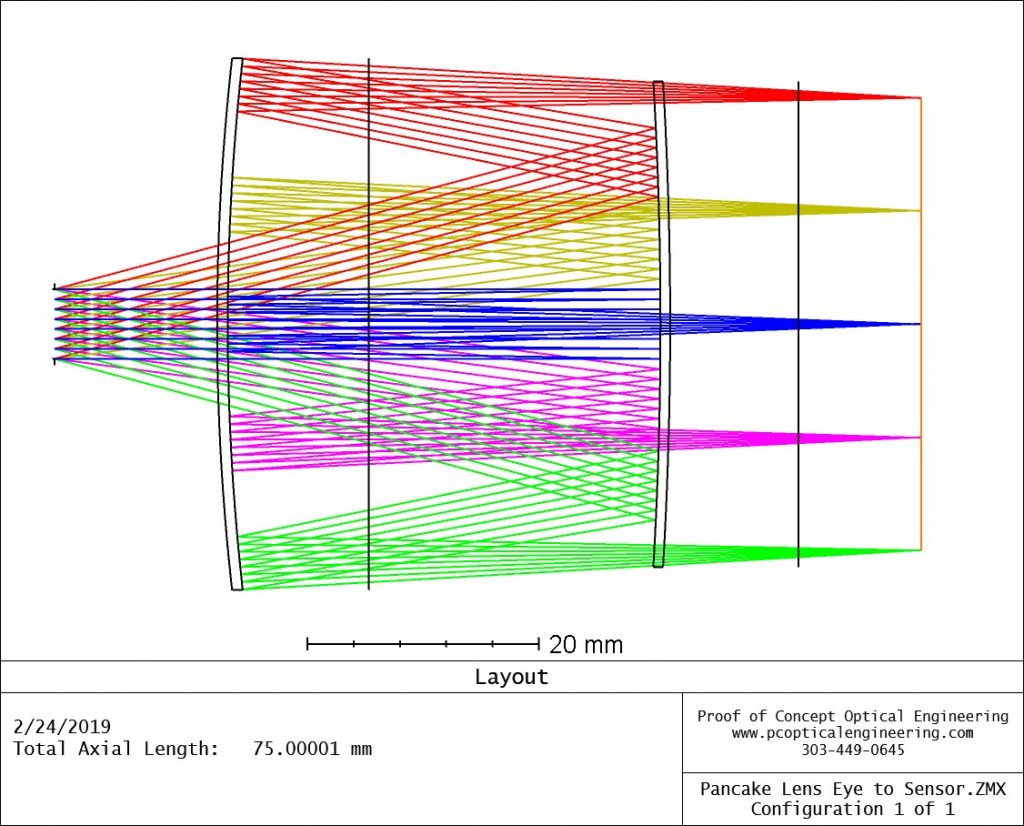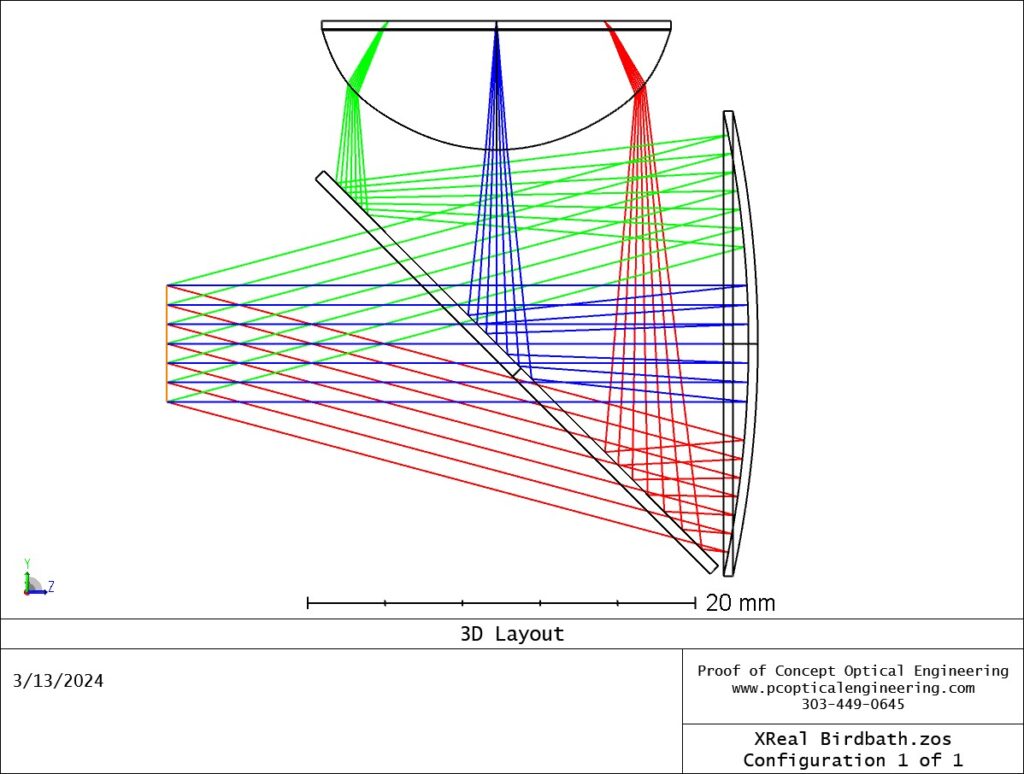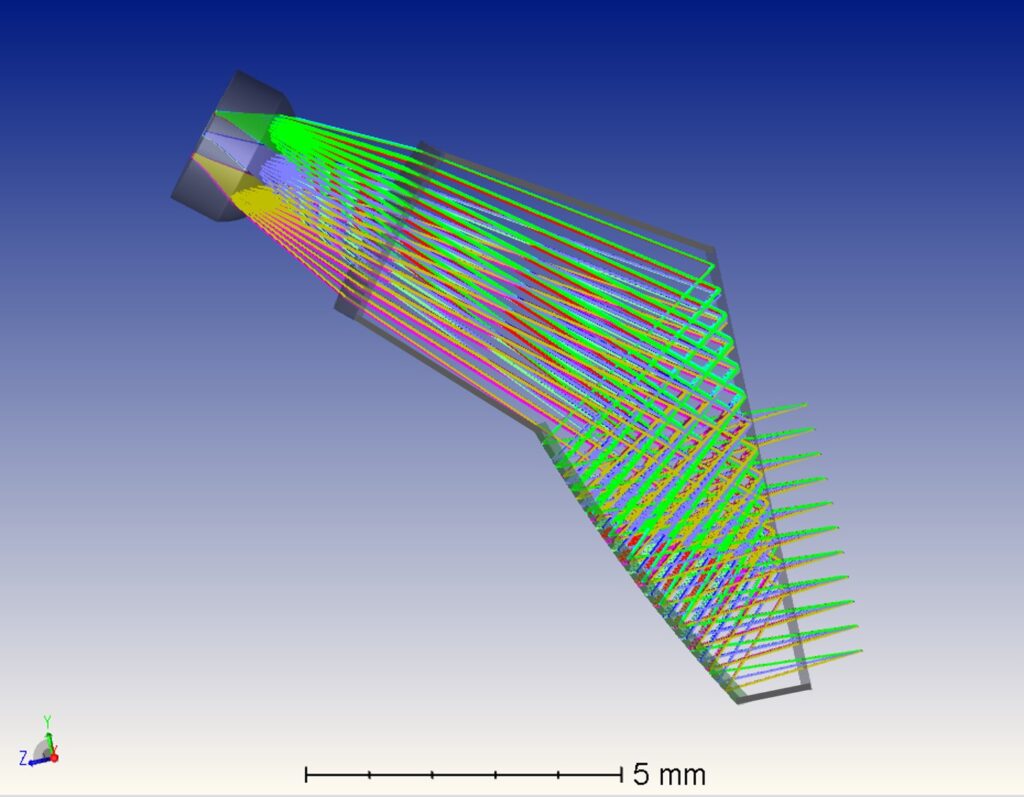My XR Experience
I’ve been designing virtual and augmented reality optics since 2014. It’s been a significant part of my business, with a few clients that you may be familiar with, like Akonia Holographics.
In addition to being brought in as a designer, I’ve been called upon to troubleshoot designs by leading companies in AR and VR. I’ve also been hired as an industry expert, during which time, I reverse-engineered some of the first successful consumer AR and VR systems from the top level down to the individual elements and performed in-depth analyses of a broad range of innovative waveguides, microdisplays, and light sources.
Projects I’ve worked on in other application areas have provided me with additional relevant experience, for example, designing an FLCoS microdisplay close-up viewer while working on light engines at Micron, designing stereoscopic imagers, designing retinal diagnostic imagers, and modeling the eye for orthokeratological and other ocular products.
I’ve also worked on the eye safety side of laser-based product development, writing device specifications to ensure compliance with maximum permissible eye exposure limits. Amid all the bluelight hazard hype in 2021, I evaluated the claimed medical efficacy of blue-blocking filter coatings for consumer glasses, determined the claims were not sufficiently supported, and protected my client from the wave of lawsuits that followed.
While I can’t share specific designs or documents that I’ve worked on and in a few cases, even my customers’ names, I can share my overall view of the technology area, which continues to evolve, and I can leverage design and analysis capabilities that I’ve developed along the way.
XR Specifications
In my view, a good starting point for designing AR glasses and VR headsets is to determine your size, weight, and power allocations (SWaP). If you’ve ever worked in aerospace, you’re probably more than familiar with the term. Whether you’re launching something into space or suspending it on the bridge of your nose, SWaP comes at a premium and will drive the design.
Will this be for an enterprise application, with emphasis on function and comfort, or are you targeting the consumer market, which desires stylish, extremely lightweight glasses?
What kind of information do you plan to display, with what resolution, colors, and apparent distance, and in what kind of ambient lighting?
What’s your timeline? There are many very exciting component technologies on the horizon (often the exact same ones year after year). Unless you’re Big Tech, I’ll likely advise you to use what’s currently available to build a breadboard prototype, rather than wait for the harmonic convergence of perfect hardware components. Hopefully, what differentiates you from other XR companies can be demonstrated while the next generation of components is still under development.
Polarization-based VR Optics
Polarization-based pancake lenses are used in some of the newer VR headsets, including the Apple Vision Pro and Bigscreen Beyond. They provide a large field of view in a small package, with clarity superior to the Fresnel lenses used in the Oculus Rift and HTC Vive several years ago.
I created the polarization-based “pancake lens” demo below, based on a 2018 Oculus VR patent.
Light from a display is converted from p to circular polarization by a quarter waveplate oriented 45 deg relative to the polarization axis. The light is then transmitted through a partially reflective, curved mirror. A second quarter waveplate converts it from circular to s polarization, which is reflected by a curved polarizer. The light then passes through the waveplate two more times, rotating the polarization to p, which is then transmitted to the eye. The folded design allows for a longer focal length in a smaller package.
Since posting this example, I’ve worked on a couple of these designs and added polarization testing capabilities to my lab.

Birdbath AR Optics
The “birdbath” is a classic AR design form, commercialized by Osterhout Design Group (ODG) and more recently, by Xreal (formerly Nreal). After trying out Nreal’s demos at AWE 2018, I brought Ralph Osterhout over to see them, because their optics looked so similar to his, yet they had added some interesting innovations, like a light field display. To my surprise, this startup has successfully claimed half of the AR market share in 2024 without a waveguide.
Based on industry expert Karl Guttag’s blog posts, I imagine the Xreal raypath looks something like this:

Freeform Waveguide Coupling Optic
I designed this example for coupling an emissive display into a waveguide with 2:3 anamorphic expansion. The display is covered with a fast aspheric lens. The rest is a plastic freeform optic.
